Description
Pharmaceutical form
Solution for Injection (I.M or I..V).
A clear colorless solution.
Clinical particulars
Therapeutic indications
Corticosteroid
For use in certain endocrine and non-endocrine disorders responsive to corticosteroid therapy
Systemic administration
Dexanocorten ampoule is recommended for systemic administration by intravenous or intramuscular injection when oral therapy is not feasible or desirable in the following conditions.
Endocrine disorders
Primary or secondary adrenocortical insufficiency
(Hydrocortisone or cortisone is the first choice, but synthetic analogues may be used with mineralocorticoids where applicable and, in infancy, mineralocorticoid supplementation is particularly important)
Non-endocrine disorders
Dexanocorten ampoule may be used in the treatment of non-endocrine corticosteroid-responsive conditions, including:
Allergy and anaphylaxis
Angioneurotic oedema and anaphylaxis
Gastrointestinal
Crohn’s disease and ulcerative colitis
Infection (with appropriate chemotherapy)
Miliary tuberculosis and endotoxic shock
Neurological disorders
Raised intracranial pressure secondary to cerebral tumours and infantile spasms
Respiratory
Bronchial asthma and aspiration pneumonitis
Skin disorders
Toxic epidermal necrolysis
Shock
Adjunctive treatment where high pharmacological doses are needed. Treatment is an adjunct to and not a substitute for, specific and supportive measures the patient may require. Dexamethasone has been shown to be beneficial when used in the early treatment of shock, but it may not influence overall survival.
Local administration
Dexanocorten ampoule is suitable for intraarticular or soft-tissue injection as adjunctive therapy for short-term administration in:
Soft-tissue disorders
Such as carpal tunnel syndrome and tenosynovitis
Intraarticular disorders
Such as rheumatoid arthritis and osteoarthritis with an inflammatory component
Dexanocorten ampoule may be injected intralesionally in selected skin disorders such as cystic acne vulgaris, localised lichen simplex, and keloids.
Posology and method of administration
Dexanocorten ampoule can be given without mixing or dilution, but if preferred, can be added without loss of potency to sodium chloride injection or dextrose injection and given by intravenous drip. The infusion mixture must be used within 24 hours and the usual aseptic techniques for injections should be observed.
Solutions used for intravenous administration or further dilution of this product should be preservative-free when used in the neonate, especially the premature infant.
All dosage recommendations are given in units of dexamethasone base.
Intravenous and intramuscular injection
General considerations
Dosage must be individualized on the basis of the disease and the response of the patient. In order to minimize side effects, the lowest possible dosage adequate to control the disease process should be used.
Usually the parenteral dosage ranges are one-third to one-half of the oral dose, given every 12 hours.
The usual initial dosage is 0.4 mg – 16.6 mg dexamethasone base (0.12 ml – 5.0 ml) a day. In situations of less severity, lower doses will generally suffice. However, in certain overwhelming, acute, life-threatening situations, administration in dosages exceeding the usual dosage may be justified. In these circumstances, the slower rate of absorption by intramuscular administration should be recognized.
Both the dose in the evening, which is useful in alleviating morning stiffness and the divided dosage regimen are associated with greater suppression of the hypothalamo-pituitary-adrenal axis. After a favorable response is noted, the proper maintenance dosage should be determined by decreasing the initial dosage by small amounts at appropriate intervals to the lowest dosage which will maintain an adequate clinical response. Chronic dosage should preferably not exceed 500 micrograms dexamethasone daily. Close monitoring of the drug dosage is needed. To avoid hypoadrenalism and/or a relapse of the underlying disease, it may be necessary to withdraw the drug gradually.
Whenever possible, the intravenous route should be used for the initial dose and for as many subsequent doses as are given while the patient is in shock (because of the irregular rate of absorption of any medicament administered by any other route in such patients). When the blood pressure responds, use the intramuscular route until oral therapy can be substituted. For the comfort of the patient, not more than 2 ml should be injected intramuscularly at any one site.
In emergencies, the usual dose of Dexanocorten ampoule by intravenous or intramuscular injection is 3.3 mg – 16.6 mg dexamethasone base (1.0 ml – 5.0 ml) – in shock use only the I.V route. This dose may be repeated until adequate response is noted.
After initial improvement, single doses of 1.7 mg – 3.3 mg dexamethasone base (0.5 ml – 1.0 ml), repeated as necessary, and should be sufficient. The total daily dosage usually need not exceed 66.4 mg dexamethasone base (20.0 ml), even in severe conditions.
When constant maximal effect is desired, dosage must be repeated at three-hour or four-hour intervals or maintained by slow intravenous drip.
Intravenous or intramuscular injections are advised in acute illness. When the acute stage has passed, oral steroid therapy should be substituted as soon as feasible.
Shock (of haemorrhagic, traumatic, or surgical origin):
Usually 1.7 mg – 5.0 mg dexamethasone/kg bodyweight (0.5 ml – 1.5 ml/kg) as a single intravenous injection. This may be repeated in two to six hours if shock persists. Alternatively, this may be followed immediately by the same dose in an intravenous infusion. Therapy with Dexanocorten ampoule is an adjunct to and not a replacement for conventional therapy.
Administration of these high doses should be continued only until the patient’s condition has stabilized and usually no longer than 48-72 hours.
Cerebral oedema:
Associated with primary or metastatic brain tumour, preoperative preparation of patients with increased intracranial pressure secondary to brain tumour: initially 8.3 mg dexamethasone base (2.5ml) intravenously, followed by 3.3 mg dexamethasone base (1.0 ml) intramuscularly every six hours until symptoms of cerebral oedema subside. Response is usually noted within 12-24 hours; dosage may be reduced after two to four days and gradually discontinued over five to seven days.
High doses of Dexanocorten ampoules are recommended for initiating short-term intensive therapy for acute life-threatening cerebral oedema. Following the high-loading dose schedule of the first day therapy, the dose is scaled down over the seven- to ten- day period of intensive therapy and subsequently reduced to zero over the next seven to ten days. When maintenance therapy is required, substitute oral dexamethasone as soon as possible (see table below).
Palliative management of recurrent or inoperable brain tumours:
Maintenance therapy should be determined for each patient; 1.7 mg dexamethasone base (0.5 ml) two or three times a day may be effective.
The smallest dose necessary to control cerebral oedema should be used.
Suggested high-dose schedule in cerebral oedema
Adults:
Initial dose 41.5 mg dexamethasone base (12.5 ml) i.v.
1st day 6.6 mg (2.0 ml) i.v. every 2 hours
2nd day 6.6 mg (2.0 ml) i.v. every 2 hours
3rd day 6.6 mg (2.0 ml) i.v. every 2 hours
4th day 3.3 mg (1.0 ml) i.v. every 2 hours
5th-8th days 3.3 mg (1.0 ml) i.v. every 4 hours
Thereafter decrease by daily reduction of 3.3 mg (1.0 ml)
Children (35 kg and over):
Initial dose 20.8 mg dexamethasone base (6.25 ml) i.v.
1st day 3.3 mg (1.0 ml) i.v. every 2 hours
2nd day 3.3 mg (1.0 ml) i.v. every 2 hours
3rd day 3.3 mg (1.0 ml) i.v. every 2 hours
4th day 3.3 mg (1.0 ml) i.v. every 4 hours
5th-8th days 3.3 mg (1.0 ml) i.v. every 6 hours
Thereafter decrease by daily reduction of 1.7 mg (0.5 ml)
Children (below 35 kg):
Initial dose 16.6 mg dexamethasone base (5.0 ml) i.v.
1st day 3.3 mg (1.0 ml) i.v. every 3 hours
2nd day 3.3 mg (1.0 ml) i.v. every 3 hours
3rd day 3.3 mg (1.0 ml) i.v. every 3 hours
4th day 3.3 mg (1.0 ml) i.v. every 6 hours
5th-8th days 1.7 mg (0.5 ml) i.v. every 6 hours
Thereafter decrease by daily reduction of 0.83 mg (0.25 ml)
Dual therapy:
In acute self-limiting allergic disorders or acute exacerbations of chronic allergic disorders, the following schedule combining oral and parenteral therapy is suggested:
First day: Dexanocorten ampoules, 3.3 mg – 6.6 mg dexamethasone base (1.0 ml – 2.0 ml) intramuscularly
Second day: Two 500 microgram dexamethasone tablets twice a day
Third day: Two 500 microgram dexamethasone tablets twice a day
Fourth day: One 500 microgram dexamethasone tablet twice a day
Fifth day: One 500 microgram dexamethasone tablet twice a day
Sixth day: One 500 microgram dexamethasone tablet once daily
Seventh day: One 500 microgram dexamethasone tablet once daily
Eighth day: Reassessment day
Intraarticular, intrabursal or intralesional injection
In general, these injections are employed when only one or two joints or areas are affected.
Some of the usual single doses are:
SITE OF INJECTION DEXAMETHASONE DOSE
Large joint (e.g. knee) 1.7 mg – 3.3 mg dexamethasone base (0.5 ml – 1.0 ml)
Small joints (e.g. interphalangeal, temporomandibular) 0.66 mg – 0 .8 mg dexamethasone base (0.2 ml – 0.25 ml)
Bursae 1.7 mg – 2 .5 mg dexamethasone base (0.5 ml – 0.75 ml)
Tendon sheaths* 0.33 mg – 0.8 mg dexamethasone base (0.1 ml – 0.25 ml)
Soft-tissue infiltration 1.7 mg – 5.0 mg dexamethasone base (0.5 ml – 1.5 ml)
Ganglia 0.8 mg – 1.7 mg dexamethasone base (0.25 ml – 0.5 ml)
*Injection should be made into the tendon sheath and not directly into the tendon.
Frequency of injection: once every three to five days to once every two to three weeks, depending on response.
Use in children:
Dosage should be limited to a single dose on alternate days to lessen retardation of growth and minimize suppression of the hypothalamo-pituitary adrenal axis.
Use in the elderly:
Treatment of elderly patients, particularly if long term, should be planned bearing in mind the more serious consequences of the common side effects of corticosteroids in old age, especially osteoporosis, diabetes, hypertension, hypokalaemia, susceptibility to infection and thinning of the skin. Close clinical supervision is required to avoid life threatening reactions.
Contraindications
Systemic fungal infection; systemic infection unless specific anti-infective therapy is employed; hypersensitivity to the active ingredient or any other component of this medication. Administration of live virus vaccines.
Special warnings and precautions for use
Contains sodium metabisulfite, a sulfite that may cause allergic-type reactions including anaphylactic symptoms and life-threatening or less severe asthmatic episodes in certain susceptible people. Sulfite sensitivity is seen more frequently in asthmatic than in nonasthmatic people.
Patients and/ or caregivers should be warned that potentially severe psychiatric adverse reactions may occur with systemic steroids. Symptoms typically emerge within a few days or weeks of starting the treatment. Risks may be higher with high doses/systemic exposure, although dose levels do not allow prediction of the onset, type, severity or duration of reactions. Most reactions recover after either dose reduction or withdrawal, although specific treatment may be necessary. Patients/caregivers should be encouraged to seek medical advice if worrying psychological symptoms develop, especially if depressed mood or suicidal ideation is suspected. Patients/caregivers should also be alert to possible psychiatric disturbances that may occur either during or immediately after dose tapering/withdrawal of systemic steroids, although such reactions have been reported infrequently.
Particular care is required when considering the use of systemic corticosteroids in patients with existing or previous history of severe affective disorders in them or in their first degree relatives. These would include depressive or manic-depressive illness and previous steroid psychosis.
Frequent intra-articular injections over a prolonged period may lead to joint destruction with bone necrosis. Intra-articular injection of corticosteroid may produce systemic adverse reactions including adrenal suppression.
Undesirable effects may be minimized by using the lowest effective dose for minimum period. Frequent patient review is required to appropriately titrate the dose against disease activity. When reduction in dosage is possible, the reduction should be gradual.
Corticosteroids may exacerbate systemic fungal infections and, therefore, should not be used in the presence of such infections, unless they are needed to control drug reactions due to amphotericin. Moreover, there have been cases reported in which, concomitant use of amphotericin and hydrocortisone, was followed by cardiac enlargement and congestive failure.
Average and large doses of hydrocortisone or cortisone can cause elevation of blood pressure, retention of salt and water and increased excretion of potassium, but these effects are less likely to occur with synthetic derivates, expect when used in large doses. Dietary salt restrictions and potassium supplementation may be necessary. All corticosteroids increase calcium excretion.
The slower rate of absorption by intramuscular administration should be recognized.
In patients on corticosteroid therapy subjected to unusual stress (e.g. intercurrent illness, trauma or surgical procedures), dosage should be increased before, during and after the stressful situation. Drug-induced secondary adrenocortical insufficiency may result from too rapid withdrawal of corticosteroids and may be minimized by gradual dosage reduction, being tapered off over weeks and months, depending on the dose and duration of treatment, but may persist for up to a year after discontinuation of therapy. In any stressful situation during that period, therefore, corticosteroid therapy should be reinstated. If the patient is already receiving corticosteroids, the current dosage may have to be temporarily increased. Salt and/or a mineralocorticoid should be given concurrently, since mineralocorticoid secretion may be impaired.
Stopping corticosteroids after prolonged therapy may cause withdrawal symptoms, including fever, myalgia, arthralgia and malaise. This may occur in patients even without evidence of adrenal insufficiency.
In patients who have received more than physiological doses of systemic corticosteroids (approximately 1 mg dexamethasone) for greater than three weeks, withdrawal should not be abrupt. How dose reduction should be carried out depends largely on whether the disease is likely to relapse as the dose of systemic corticosteroids is reduced. Clinical assessment of disease activity may be needed during withdrawal. If the disease is unlikely to relapse on withdrawal of systemic corticosteroids but there is uncertainty about hypothalamic-pituitary adrenal (HPA) suppression, the dose of systemic corticosteroids may be reduced rapidly to physiological doses. Once a daily dose of 1 mg dexamethasone is reached, dose reduction should be slower to allow the HPA-axis to recover.
Abrupt withdrawal of systemic corticosteroid treatment, which has continued up to three weeks is appropriate if it is considered that the disease is unlikely to relapse. Abrupt withdrawal of doses of up to 6 mg daily of dexamethasone for three weeks is unlikely to lead to clinically relevant HPA-axis suppression, in the majority of patients. In the following patient groups, gradual withdrawal of systemic corticosteroid therapy should be considered even after courses lasting three weeks or less:
• patients who have had repeated courses of systemic corticosteroids, particularly if taken for greater than three weeks,
• when a short course has been prescribed within one year of cessation of long-term therapy (months or years),
• patients who may have reasons for adrenocortical insufficiency other than exogenous corticosteroid therapy,
• patients receiving doses of systemic corticosteroid greater than 6 mg daily of dexamethasone,
• patients repeatedly taking doses in the evening.
Patients should carry ‘steroid treatment’ cards, which give clear guidance on the precautions to be taken to minimize risk and which provide details of prescriber, drug, dosage and the duration of treatment.
Because anaphylactoid reactions have occurred, rarely, in patients receiving parenteral corticosteroid therapy, appropriate precautions should be taken prior to administration, especially when the patient has a history of allergy to any drug.
Administration of live virus vaccines is contraindicated in individuals receiving immunosuppressive doses of corticosteroids. If inactivated viral or bacterial vaccines are administered to individuals receiving immunosuppressive doses of corticosteroids, the expected serum antibody response may not be obtained. However, immunization procedures may be undertaken in patients who are receiving corticosteroids as replacement therapy, e.g. for Addison’s disease.
Literature reports suggest an apparent association between use of corticosteroids and left ventricular free wall rupture after a recent myocardial infarction; therefore, therapy with corticosteroids should be used with great caution in these patients.
The use of Dexanocorten ampoules in active tuberculosis should be restricted to those cases of fulminating or disseminated tuberculosis in which the corticosteroid is used for the management of the disease in conjunction with an appropriate anti-tuberculosis regimen. If the corticosteroids are indicated in patients with latent tuberculosis or tuberculin reactivity, close observation is necessary as reactivation may occur. During prolonged corticosteroid therapy, these patients should receive prophylactic chemotherapy.
Corticosteroids may mask some signs of infection and new infections may appear during their use. Suppression of the inflammatory response and immune function increasing the susceptibility to infections and their severity. The clinical presentation may often be atypical and serious infections such as septicaemia and tuberculosis may be masked and reach an advanced stage before being recognized. There may be decreased resistance and inability to localize infection.
A report shows that the use of corticosteroids in cerebral malaria is associated with a prolonged coma and an increased incidence of pneumonia and gastro-intestinal bleeding.
Chickenpox is of particular concern, since this normally minor illness may be fatal in immunosuppressed patients. Patients (or parents of children) without a definite history of chickenpox should be advised to avoid close personal contact with chickenpox or herpes zoster and if exposed they should seek urgent medical attention. Passive immunisation with varicella/zoster immunoglobulin (VZIG) is needed by exposed non-immune patients who are receiving systemic corticosteroids or who have used them within the previous three month; this should be given within ten days of exposure to chickenpox.
If a diagnosis of chickenpox is confirmed, the illness warrants specialist care and urgent treatment. Corticosteroids should not be stopped and the dose may need to be increased.
Measles can have a more serious or even fatal course in immunosuppressed patients. In such children or adults particular care should be taken to avoid exposure to measles. If exposed, prophylaxis with intramuscular pooled immunoglobulin (IG) may be indicated. Exposed patients should be advised to seek medical advice without delay.
Corticosteroids may activate latent amoebiasis or strongyloidiasis or exacerbate active disease. Therefore, it is recommended that latent or active amoebiasis and strongyloidiasis be ruled out, before initiating corticosteroid therapy in any patient at risk of or with symptoms of either condition.
Prolonged use of corticosteroids may produce posterior subcapsular cataracts, glaucoma with possible damage to the optic nerves and may enhance the establishment of secondary ocular infections due to fungi or viruses.
Corticosteroids may increase or decrease motility and number of spermatozoa.
This medicinal product contains up to 1.9 mmol (or 43 mg) sodium per maximum single dose of the medicinal product (420 mg for a person with 70 kg bodyweight). To be taken into consideration by patients on a controlled sodium diet.
Special precautions:
Particular care is required when considering the use of systemic corticosteroids in patients with the following conditions and frequent patient monitoring is necessary: renal insufficiency, hypertension, diabetes or in those with a family history of diabetes, congestive heart failure, osteoporosis, previous steroid myopathy, glaucoma (or family history of glaucoma), myasthenia gravis, non-specific ulcerative colitis, diverticulitis, fresh intestinal anastomoses, active or latent peptic ulcer, existing or previous history of severe affective disorders (especially previous steroid psychosis), liver failure and epilepsy. Signs of peritoneal irritation, following gastrointestinal perforation in patients receiving large doses of corticosteroids, may be minimal or absent. Fat embolism has been reported as a possible complication of hypercortisonism.
There is an enhanced effect of corticosteroids in patients with hypothyroidism and in those with cirrhosis.
Corticosteroids should be used cautiously in patients with ocular herpes simplex because of possible corneal perforation.
Local steroid injection should be undertaken in an aseptic environment to reduce the particular risk of bacterial infection, injection of a steroid into an infected site should be avoided.
Appropriate examination of joint fluids is necessary to exclude a septic process.
A marked increase in pain accompanied by local swelling, further restriction of joint motion, fever and malaise are suggestive of septic arthritis. If this complication occurs and the diagnosis of sepsis is confirmed, appropriate antimicrobial therapy should be instituted.
Patients should understand the great importance of not over-using joints that are still diseased, despite symptomatic improvement.
Corticosteroids should not be injected into unstable joints.
Frequent intraarticular injections have been reported to cause development of Charcot-like arthropathies.
Preterm neonates:
Available evidence suggests long-term neurodevelopmental adverse events after early treatment (< 96 hours) of premature infants with chronic lung disease at starting doses of 0.25mg/kg twice daily.
Children:
Corticosteroids cause growth retardation in infancy, childhood and adolescence, which may be irreversible. Treatment should be limited to the minimum dosage for the shortest possible time. In order to minimise suppression of the hypothalamo-pituitary-adrenal axis and growth retardation, treatment should be limited, where possible, to a single dose on alternate days.
Growth and development of infants and children on prolonged corticosteroid therapy should be carefully monitored.
Dexamethasone has been used to treat and prevent chronic lung disease in preterm infants (unlicensed use). Clinical trials have shown no long term benefit in reducing time to discharge, the incidence of chronic lung disease or mortality. Recent trials have suggested an association between the use of dexamethasone in preterm infants and the development of cerebral palsy. In view of this possible safety concern, an assessment of the risk benefit should be made on an individual patient basis.
Interaction with other medicinal products and other forms of interaction
Aspirin should be used cautiously in conjunction with corticosteroids in hypoprothrombinaemia.
The renal clearance of salicylates is increased by corticosteroids and therefore salicylate dosage should be reduced along with steroid withdrawal.
As phenytoin, barbiturates, ephedrine, rifabutin, carbamazepine, rifampicin and aminoglutethimide may enhance the metabolic clearance of corticosteroids, resulting in decreased blood levels and reduced physiological activity, the dosage may have to be adjusted. These interactions interfere with dexamethasone suppression tests which should be interpreted with caution during administration of these drugs.
False-negative results in the dexamethasone suppression test in patients being treated with indometacin have been reported.
The efficacy of coumarin anticoagulants may be changed by concurrent corticosteroid treatment. The prothrombin time should be checked frequently in patients who are receiving corticosteroids and coumarin anticoagulants at the same time, in order to avoid spontaneous bleeding.
The desired effects of hypoglycaemic agents (including insulin) are antagonised by corticosteroids.
When corticosteroids are administered concomitantly with potassium-depleting diuretics, patients should be observed closely for development of hypokalaemia.
Corticosteroids may affect the nitroblue tetrazolium test for bacterial infection and produce false-negative results.
Antiretroviral protease inhibitors (ritonavir, darunavir, indinavir, lopinavir, saquinavir and efavirenz) are metabolised by CYP3A. Medicinal products that induce CYP3A activity, such as dexamethasone, may increase the clearance of medicines metabolised by CYP3A, resulting in lowered plasma concentrations.
Certain antiretroviral protease inhibitors (ritonavir, indinavir) may also be inducers of CYP3A themselves and as a result may increase the plasma concentration of dexamethasone.
Pregnancy and lactation
The ability of corticosteroids to cross the placenta varies between individual drugs, however, dexamethasone readily crosses the placenta.
Administration of corticosteroids to pregnant animals can cause abnormalities of foetal development including cleft palate, intrauterine growth retardation and effects on brain growth and development. There is no evidence that corticosteroids result in an increased incidence of congenital abnormalities, such as cleft palate/lip in man. See also section 5.3 of the SmPC.
However, when administered for prolonged periods or repeatedly during pregnancy, corticosteroids may increase the risk of intrauterine growth retardation. Hypoadrenalism may, in theory, occur in the neonate following prenatal exposure to corticosteroids but usually resolves spontaneously following birth and is rarely clinically important. As with all drugs, corticosteroids should only be prescribed when the benefits to the mother and child outweigh the risks. When corticosteroids are essential however, patients with normal pregnancies may be treated as though they were in non-gravid state.
Corticosteroids may pass into breast milk, although no data are available for dexamethasone. Infants of mothers taking high doses of systemic corticosteroids for prolonged periods may have a degree of adrenal suppression.
Effects on ability to drive and use machines
None reported
Undesirable effects
The incidence of predictable undesirable effects, including hypothalamic-pituitary-adrenal suppression, correlates with the relative potency of the drug, dosage, timing of administration and the duration of treatment.
Fluid and electrolyte disturbances:
Sodium retention, fluid retention, congestive heart failure in susceptible patients, potassium loss, hypokalaemic alkalosis, hypertension, increased calcium excretion.
Musculoskeletal:
Muscle weakness, steroid myopathy, loss of muscle mass, osteoporosis (especially in post-menopausal females), vertebral compression fractures, aseptic necrosis of femoral and humeral heads, pathological fracture of long bones, tendon rupture and post-injection flare (following intraarticular use')
Gastrointestinal:
Peptic ulcer with possible perforation and haemorrhage, perforation of the small and large bowel, particularly in patients with inflammatory bowel disease, pancreatitis, abdominal distension, ulcerative oesophagitis, dyspepsia, oesophageal candidiasis
Dermatological:
Impaired wound healing, thin fragile skin, petechiae and ecchymoses, erythema, striae, telangiectasia, acne, increased sweating, possible suppression of skin tests, burning or tingling especially in the perineal area (after intravenous injection), other cutaneous reactions such as allergic dermatitis, urticaria, angioneurotic oedema and hypo- or hyper-pigmentation.
Neurological:
Convulsions, increased intracranial pressure with papilloedema (pseudotumour cerebri) usually after treatment, vertigo, headache, cerebral palsy in pre-term infants.
Psychiatric:
A wide range of psychiatric reactions including affective disorders (such as irritable, euphoric, depressed and labile mood, and suicidal thoughts), psychotic reactions (including mania, delusions, hallucinations, and aggravation of schizophrenia), behavioural disturbances, irritability, anxiety, sleep disturbances, and cognitive dysfunction including confusion and amnesia have been reported. Reactions are common and may occur in both adults and children. In adults, the frequency of severe reactions has been estimated to be 5-6%. Psychological effects have been reported on withdrawal of corticosteroids; the frequency is unknown.
Endocrine:
Menstrual irregularities, amenorrhoea, development of Cushingoid state, suppression of growth in children and adolescents, secondary adrenocortical and pituitary unresponsiveness (particularly in times of stress as in trauma, surgery or illness), decreased carbohydrate tolerance, manifestation of latent diabetes mellitus, increased requirements for insulin or oral hypoglycaemic agents in diabetes, hirsutism.
Anti-inflammatory and immunosuppressive effects:
Increased susceptibility and severity of infections with suppression of clinical symptoms and signs; opportunistic infections, recurrence of dormant tuberculosis.
Ophthalmic:
Posterior subcapsular cataracts, increased intraocular pressure, papilloedema, corneal or scleral thinning, exacerbation of ophthalmic viral disease, glaucoma exophthalmos, rare instances of blindness associated with intralesional therapy around the face and head, retinopathy of prematurity.
Metabolic:
Negative nitrogen balance due to protein catabolism, negative calcium balance.
Cardiovascular:
Myocardial rupture following recent myocardial infarction, hypertrophic cardio-myopathy in low birth weight infants.
Other:
Hypersensitivity, including anaphylaxis has been reported, leucocytosis, thrombo-embolism, weight gain, increased appetite, nausea, malaise, hiccups and sterile abscess.
Multiple myeloma patients treated with lenalidomide or thalidomide in combination with dexamethasone have an increased risk of thromboembolic events including deep vein thrombosis and pulmonary embolism.
Withdrawal symptoms and signs
Too rapid a reduction of corticosteroid dosage following prolonged treatment can lead to acute adrenal insufficiency, hypotension and death.
In some instances, withdrawal symptoms may simulate a clinical relapse of the disease for which the patient has been undergoing treatment.
Overdose
Reports of acute toxicity and/or deaths following overdosage with glucocorticoids are rare. No antidote is available. Treatment is probably not indicated for reactions due to chronic poisoning, unless the patient has a condition that would render a patient unusually susceptible to ill effects from corticosteroids. In this case, symptomatic treatment should be instituted as necessary.
Anaphylactic and hypersensitivity reactions may be treated with adrenaline, positive-pressure artificial respiration and aminophylline. The patient should be kept warm and quiet.
The biological half-life of dexamethasone in plasma is about 190 minutes.
Pharmacological properties
Pharmacodynamic properties
Pharmacotherapeutic group: Glucocorticoids
Dexamethasone possesses the actions and effects of other basic glucocorticoids and is among the most active members of its class.
Glucocorticoids are adrenocortical steroids, both naturally occurring and synthetic, which are readily absorbed from the gastrointestinal tract. They cause profound and varied metabolic effects and in addition, they modify the body's immune responses to diverse stimuli. Naturally-occurring glucocorticoids (hydrocortisone and cortisone), which also have salt-retaining properties, are used primarily for their potent anti-inflammatory effects in disorders of many organ systems.
Dexamethasone has predominant glucocorticoid activity with little propensity to promote renal retention of sodium and water. Therefore it does not offer complete replacement therapy and must be supplemented with salt or desoxycorticosterone.
Pharmacokinetic properties
The biological half-life of dexamethasone in plasma is about 190 minutes.
Binding of dexamethasone to plasma proteins is less than for most other corticosteroids and is estimated to be about 77%.
Up to 65% of a dose is excreted in the urine in 24 hours, the rate of excretion being increased following concomitant administration of phenytoin.
The more potent halogenated corticosteroids such as dexamethasone, appear to cross the placental barrier with minimal inactivation.
Pharmaceutical particulars
List of excipients
Creatinine, sodium citrate dihydrate, sodim metabisulfite, methylparaben sodium, propylparaben sodium, citric acid, sodium hydroxide, water for injection.
Incompatibilities
Dexamethasone is physically incompatible with daunorubicin, doxorubicin, vancomycin, diphenhydramine (with lorazepam and metoclopramide) and metaraminol bitartrate and should not be admixed with solutions containing these drugs. It is also incompatible with doxapram and glycopyrrolate in syringe and with ciprofloxacin, idarubicin and midazolam in Y-site injections (1:1 mixture).
Special precautions for storage
Keep out of reach of children.
Keep at a temperature not exceeding 30° C.
Nature and contents of container
A carton box containing three amber (typeI) glass ampoules, each of 2 ml solution in plastic tray and an insert leaflet.
Shelf life: 2 years.
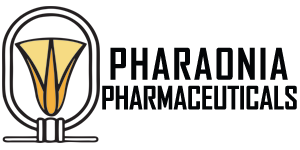

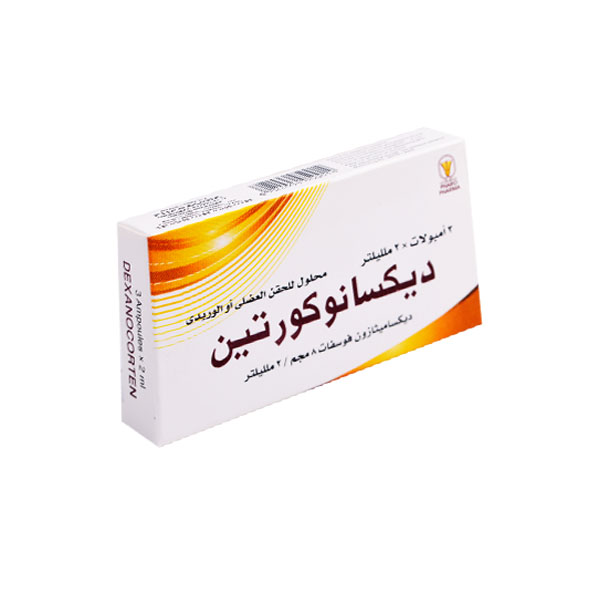
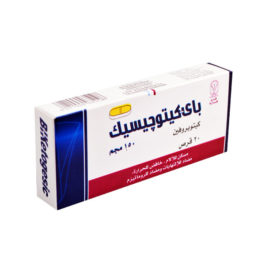
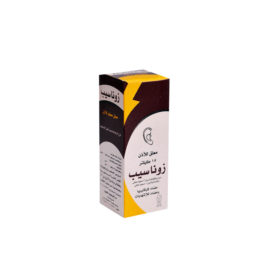
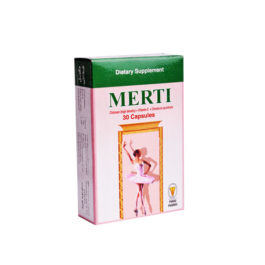

Reviews
There are no reviews yet.